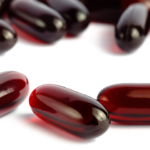Weight Loss Injections: A Revolutionary Approach
The pursuit of weight loss is a journey fraught with challenges, often involving rigorous diets, strenuous exercise, and a considerable amount of willpower. For many, despite their best efforts, achieving significant and sustainable weight loss remains elusive. In recent years, a revolutionary approach has emerged: weight loss injections. These injectable medications offer a potentially game-changing strategy for individuals struggling to shed excess pounds, offering a path toward a healthier lifestyle.
Understanding the Mechanisms:
Several different weight loss injections are currently available or under development, each operating through distinct mechanisms. Many target specific hormones and neurotransmitters within the body that regulate appetite, metabolism, and fat storage. Let’s delve into some key examples:
-
Semaglutide (Wegovy, Ozempic): This glucagon-like peptide-1 (GLP-1) receptor agonist mimics the effects of GLP-1, a naturally occurring hormone that slows gastric emptying, increases satiety (feeling full), and regulates blood sugar levels. By prolonging the feeling of fullness, it reduces caloric intake, leading to weight loss. Studies have shown significant weight loss with Semaglutide, even exceeding 15% of body weight in some clinical trials. However, it’s crucial to note potential side effects such as nausea, vomiting, diarrhea, and constipation, which typically subside over time.
-
Liraglutide (Saxenda): Another GLP-1 receptor agonist, Liraglutide, shares similar mechanisms with Semaglutide but differs in its potency and duration of action. It also promotes weight loss by reducing appetite and increasing satiety. Similar side effects to Semaglutide can be expected.
-
Tirzepatide (Mounjaro): This medication targets both GLP-1 and glucose-dependent insulinotropic polypeptide (GIP) receptors. By activating both pathways, Tirzepatide demonstrates even more potent effects on weight loss, appetite regulation, and blood glucose control compared to GLP-1 receptor agonists alone. Clinical trials have shown remarkable weight loss results, potentially exceeding those achieved with Semaglutide. Side effects are similar to other GLP-1 receptor agonists but may be more pronounced initially.
Beyond the GLP-1 Agonists:
While GLP-1 receptor agonists currently dominate the weight loss injection market, other approaches are also being explored. These include:
-
BPC-157: This peptide is under investigation for its potential role in promoting tissue repair and reducing inflammation. Some anecdotal evidence suggests it may indirectly support weight loss through improved metabolism and gut health. However, more rigorous clinical research is needed to confirm its efficacy and safety for weight loss.
-
CJC-1295: This growth hormone-releasing hormone (GHRH) analogue is explored for its potential in enhancing metabolism and reducing body fat. Similar to BPC-157, more extensive studies are needed to establish its role in weight loss.
Considerations for Choosing a Weight Loss Injection:
Selecting the right weight loss injection involves careful consideration of several factors:
-
Individual Health Profile: Pre-existing medical conditions, such as kidney or heart disease, can influence the suitability of certain injections. A comprehensive medical evaluation is crucial before initiating any treatment.
-
Medication Interactions: Weight loss injections can interact with other medications. It’s essential to disclose all medications, supplements, and herbal remedies to your healthcare provider.
-
Side Effects: While generally well-tolerated, weight loss injections can cause side effects. Understanding the potential risks and benefits is crucial for informed decision-making.
-
Lifestyle Modifications: Weight loss injections are most effective when combined with a healthy diet and regular exercise. These lifestyle modifications amplify the benefits of the injections and promote sustainable weight loss.
-
Cost and Accessibility: The cost of weight loss injections can be substantial, and access might be limited depending on insurance coverage and geographical location.
The Role of Healthcare Professionals:
It’s imperative to emphasize that weight loss injections should be administered under the guidance of a qualified healthcare professional. They will assess your medical history, conduct necessary tests, and determine the most appropriate medication and dosage. Regular monitoring is crucial to manage potential side effects and ensure optimal outcomes. They will also guide you on necessary lifestyle changes to complement the injection therapy.
Long-Term Sustainability and Potential Risks:
While weight loss injections can provide significant initial weight loss, long-term sustainability requires ongoing commitment to healthy lifestyle changes. Once the injection is stopped, weight regain is possible if these changes aren’t maintained. Therefore, it’s critical to view weight loss injections as a tool to assist in initiating healthy habits rather than a stand-alone solution. Moreover, potential long-term risks associated with these medications are still being investigated, highlighting the importance of ongoing monitoring and communication with your healthcare provider.
Conclusion:
Weight loss injections represent a significant advancement in the management of obesity. They offer a powerful tool for individuals struggling with significant weight loss, but their effectiveness relies heavily on a holistic approach that integrates medication with lifestyle adjustments under the careful guidance of a qualified healthcare professional. The choice of specific medication, potential side effects, and the commitment to long-term lifestyle changes are critical factors to consider for achieving and maintaining successful weight loss. The information provided here should not be taken as medical advice, and consultation with a healthcare professional is always recommended.





